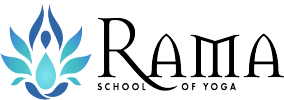As a yoga teacher, it’s essential to have a basic understanding of anatomy and physiology to ensure safe and effective yoga practice. Understanding the structure and function of the human body can help you guide your students through poses with confidence and provide modifications when necessary.
In this blog post, we will cover some of the key concepts in anatomy and physiology that are relevant to yoga practice and teaching.
Anatomy is the study of the structure and organization of the body. It’s essential for yoga teachers to have a basic understanding of anatomy, particularly the skeletal, muscular, and nervous systems.
Skeletal System: The skeletal system is composed of bones, cartilage, and ligaments. It provides the framework for the body, protects vital organs, and allows for movement. Understanding the basic structure of the skeleton and the major joints can help you guide students through poses with proper alignment and prevent injury.
Muscular System: The muscular system is responsible for movement and includes three types of muscles: skeletal, smooth, and cardiac. Understanding the major muscle groups and their functions can help you create balanced sequences and provide modifications for students with injuries or limitations.
Nervous System: The nervous system controls and coordinates all body functions, including movement, sensation, and perception. Understanding the basic anatomy of the nervous system can help you guide students through poses with proper alignment and avoid over-stimulating the nervous system.
Physiology is the study of how the body functions. As a yoga teacher, it’s important to have a basic understanding of physiological concepts such as breathing, circulation, and the stress response.
BreathingBreathing is a fundamental aspect of yoga practice, and it’s essential to understand the mechanics of breathing and the benefits of pranayama (breathing exercises). Understanding the connection between breath and movement can help you guide students through a safe and effective yoga practice.
Circulation is the process by which blood is transported throughout the body. Understanding the basic anatomy and physiology of the cardiovascular system can help you create sequences that promote circulation and provide modifications for students with cardiovascular conditions.
Stress Response: Stress is a natural response to challenging situations, but chronic stress can have negative effects on physical and mental health. Understanding the stress response and the benefits of relaxation techniques such as meditation and restorative yoga can help you guide students through a practice that promotes relaxation and stress relief.
As a yoga teacher, having a basic understanding of anatomy and physiology is essential for safe and effective yoga practice. Understanding the structure and function of the body can help you guide your students through poses with proper alignment, provide modifications when necessary, and create sequences that promote balance and well-being. By continuing to learn and deepen your knowledge of anatomy and physiology, you can become a more skilled and confident yoga teacher.




